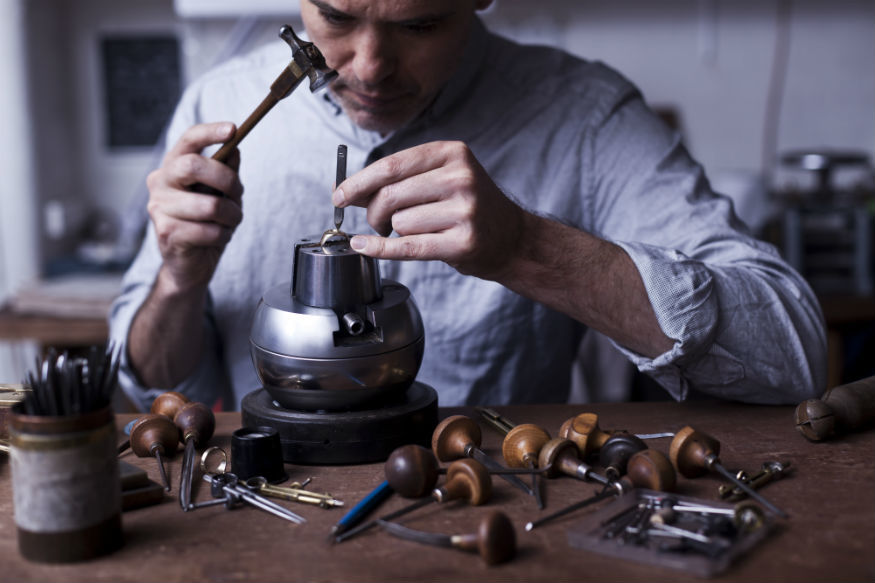Table of Contents
Introduction
Traditional craftsmanship is a blend of skills, techniques, and artistry passed down through generations, creating unique, often custom-made items that reflect cultural heritage. While mass production poses challenges, artisans have adapted by embracing modern technology, preserving traditional methods while staying relevant in today’s market.
Technological innovations like digital design software, CNC (Computer Numerical Control) machines, 3D printing, and online platforms have greatly impacted traditional craftsmanship. These tools improve design, production, material use, marketing, and customer engagement.
By combining traditional techniques with modern technology, artisans can preserve their craft while expanding their capabilities and reach, bridging the gap between old traditions and new possibilities.
Digital Design Tools: Bridging Creativity and Precision
Digital design tools have transformed the foundational stages of craftsmanship by providing artisans with sophisticated means to visualize and execute their concepts. Traditionally, artisans faced difficulties in accurately conveying their visions, sometimes leading to discrepancies between imagination and outcome. With CAD (Computer-Aided Design) software, these hurdles diminish. Artisans can create precise digital renderings of their products, facilitating immediate adjustments and refinements before physical production even begins Source.
Moreover, these digital tools enhance precision in craftsmanship, essential in fields such as woodworking, metalworking, and textile design.CAD software allows artisans to incorporate precise dimensions and measurements, ensuring that every aspect of their product aligns with their original vision. This precision results in higher-quality products that are more appealing to consumers who value craftsmanship, exemplified by brands like Herman Miller, which integrate advanced design technologies with traditional techniques.
Digital design tools also foster a culture of rapid experimentation among artisans. By enabling designers to explore various iterations of their ideas, they can innovate without the cost and time associated with manual trials. This rapid prototyping encourages a creative environment that might have been stifled within only traditional confines, leading to unique blends of artistry that appeal to modern consumers.
Read Also: Technology in Handicrafts: Preserving Tradition While Innovating
Advanced Production Techniques: Efficiency and Quality Combined
Modern production methods like CNC machining and 3D printing have transformed traditional craftsmanship by blending efficiency with quality. CNC machines automate complex cuts and designs, reducing manual labor while improving precision and speed. This technology allows artisans to produce intricate details quickly, enhancing the quality of their work.
Consistency is another key benefit. For artisans creating multiple versions of similar designs, CNC machines ensure uniformity, which can be challenging to achieve by hand. This reliability helps build trust with customers, ensuring each product meets high standards. For example, brands like Weber Grills use CNC technology to maintain quality and meet consumer demand.
3D printing also enhances craftsmanship by enabling the creation of detailed and complex shapes that traditional methods cannot achieve. Rapid prototyping allows artisans to turn digital models into physical products within hours, reducing production time and costs. This technology encourages creativity and customization, allowing artisans to offer unique, personalized products.
Marketing and Customer Engagement in the Digital Age
Technology has transformed how artisans market their work and connect with customers. Online platforms like Etsy and custom e-commerce sites allow artisans to reach global audiences, expanding their market beyond local communities. These platforms enable artisans to showcase their handcrafted goods to those who value authenticity, increasing sales opportunities.
Social media, especially Instagram and Pinterest, has become a key tool for artisans to share their stories, processes, and engage directly with customers. For example, ceramicist Eleanor Szurley uses Instagram to showcase her techniques, attracting thousands of followers who appreciate her craft.
Moreover, technology allows artisans to personalize customer engagement through data-driven marketing. By analyzing consumer preferences, artisans can tailor their products to meet specific demands, ensuring they stay relevant and build brand loyalty in a world of mass production.
Conclusion
The marriage of modern technology and traditional craftsmanship creates a dynamic and sustainable way to preserve cultural heritage while adapting to contemporary demands. By integrating digital design tools, advanced production techniques, and effective marketing strategies, artisans can enhance their creative processes, improve product quality, and establish meaningful connections with their customers. As the world continues to evolve, embracing the synergy of tradition and technology will be vital for artisans seeking to thrive in the modern marketplace.
Top 5 FAQs About How Modern Technology Enhances Traditional Craftsmanship
1. How does digital design impact traditional craftsmanship?
Digital design tools like CAD software enable artisans to visualize and refine their concepts before they enter production. This precision reduces errors and enhances the accuracy of the final product, marrying artistry with technical precision.
2. Can advanced production techniques maintain the quality of handmade crafts?
Yes, modern techniques such as CNC machining and 3D printing maintain high craftsmanship standards while streamlining production. These methods offer consistency and the capacity to produce intricate designs that celebrate traditional arts.
3. How do online marketplaces benefit traditional artisans?
Online marketplaces provide artisans with access to a global audience, allowing them to reach consumers interested in unique, handcrafted items. This broader market access can lead to increased sales and visibility.
4. In what ways can social media help traditional craftsmen?
Social media platforms enable artisans to showcase their work, share their creative processes, and communicate directly with potential customers. This engagement fosters brand loyalty and creates a community around their crafts.
5. Is technology taking away from the authenticity of traditional craftsmanship?
Rather than diminishing authenticity, modern technology enhances it by preserving traditional techniques while fostering innovation and efficiency. The integration of technology creates new opportunities for artisans to express their creativity and engage more personally with their audience.





